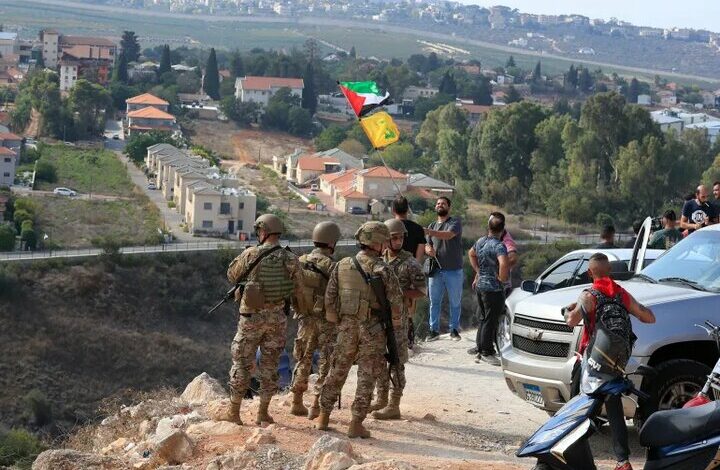Lebanon’s deterrence equations; From the liberation of the south to Al-Aqsa storm

| The 24th anniversary of the liberation of southern Lebanon is passing while the deterrence equations of the resistance front against the Zionist regime have changed in a surprising way. |
reported by %20%0A
What has changed on the southern front of Lebanon until today?
According to Lebanese Brigadier General Hisham Jaber and an expert on strategic issues, the developments that occurred between 2000 and 2024 in the south of Lebanon are as follows:
South Lebanon was freed from Israeli occupation after 18 years and became the first Arab land that the resistance forces were able to liberate.
Israel suffered a lot of human and material losses during the occupation of southern Lebanon, which caused it to unilaterally withdraw from Lebanon in May 2000 without informing its agents. .
When the Israeli army withdrew from southern Lebanon, “Terry Rudlarsen”, the representative of the UN Secretary General at the time, came to Lebanon with a plan and drew a blue line on the country’s borders. and occupied Palestine. It should be noted that this line is not considered an international border and there are tens of hectares of agricultural land between it and the real border.
During the years 2000 to 2006, Hezbollah strengthened its military and organizational power, and in 2006, a new war took place between Hezbollah and the Israeli army, and this aggression Israel was defeated in Lebanon.
After 33 days of the start of the war, Israel, under the leadership of Ehud Olmert, the Prime Minister of this regime, decided to stop the war and withdraw from southern Lebanon. After that, the United Nations Resolution No. 1701 was issued, after which the so-called United Nations Peacekeeping Forces (UNIFIL) were deployed in southern Lebanon.
During the past 18 years, Israel has always violated Resolution 1701 and UNIFIL forces have not been able to perform their role properly in southern Lebanon.
On October 8, 2023, Hezbollah announced that it would open the southern front of Lebanon against the Zionist regime in order to support Gaza, and since then, the conflict between Hezbollah forces and The Israeli army continues on the border between Lebanon and occupied Palestine.
The war continues while Israel says that Hezbollah has so far only shown 20% of its military power and has only used surface-to-surface missiles twice. It has also kept its surface-to-air missiles and precision ballistic missiles and has not used much of its advanced equipment. Also, until now the special forces of Rizwan Hezbollah have not entered the battlefield, while these forces are ready to enter the borders and control the settlements of Al-Jalil in the north of occupied Israel and Palestine.
Establishment of resistance in the southern front of Lebanon
“Wasim Bazzi”, a Lebanese political analyst, in turn, divides the events from 2000 to now in the south of Lebanon into three stages:
The first stage is related to the year 2000; When the occupied part of southern Lebanon was freed from the Zionists and this was the peak of the armed resistance that lasted for 18 years. However, the fields of Sheba and the hills of Kafr Shuba remained under the occupation of the Zionists, and the sea borders were not defined.
The second stage is from 2000 to 2006, when the resistance reorganized its power and the border areas of Lebanon witnessed the growth of population, economy and urbanization.
The third stage is related to the period when the July 2006 war happened; where the enemy failed again against the resistance of Lebanon and, by the Zionists’ own admission, could not achieve their goal.
This Lebanese analyst pointed to Hezbollah’s participation in the battle of Al-Aqsa Storm to support the Gaza Strip, and emphasized that in the meantime, the Lebanese resistance has managed to maintain its strong presence in a front. 90 kilometers in length, it is considered to be one of the strongest armies in the world thanks to the constant support of the West and the United States.


